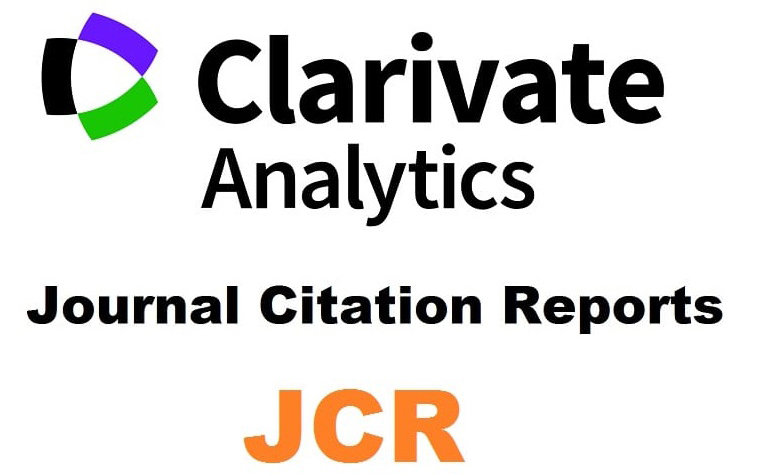El Galba de Historias, ¿una etopeya de Nerva?
Galba in Histories, an ethopoeia of Nerva?
DOI:
https://doi.org/10.12795/i54.12Palabras clave:
Galba, Nerva, Tácito, HistoriasResumen
El objetivo de esta contribución es demostrar que el Galba que Tácito nos presenta en Historias es una crítica velada a Nerva, sobre todo en lo referente a su avanzada edad. La forma en cómo ambos alcanzaron el poder, su prestigioso origen, su avanzada edad y la falta de descendencia eran elementos suficientes para que los lectores de Tácito viesen en Galba un trasunto de Nerva. Por otra parte, el discurso que Tácito pone en boca de Galba en ocasión de la adopción de Pisón evidencia mucho más esta vinculación entre Galba y Nerva. Es evidente que se trata de una proyección de otro proceso de adopción más cercano para él y sus lectores, el de Trajano por Nerva.
Descargas
Citas
Berger, A., “Encyclopedic Dictionary of Roman Law”, Transactions of the American Philosophical Society, 43 (1993), pp. 333-808.
Biraghi, G., “Il problema economico del regno di Nerva”, La Parola del Pasato, 19, (1951), pp. 257-273.
Borda, M., Le famiglie imperiali da Galba a Commodo (Roma, Colombo, 1943).
Büchner, K., “Tacitus und Plinius über Adoption des römischen Kaisers (Das Verhältnis von Tacitus hist. I 15-16 zu Plinius Panegyricus 7-8)”, Rheinisches Museum für Philologie, 98 (1955), pp. 289-312.
Castillo A. del., “The emperor Galba's assumption of power: some chronological considerations”, Historia, 51 (2002), pp. 449-461.
Castillo Pascual, P. (en prensa). “El Nerón de los discursos de Subrio Flavo, Antonio Honorato, Boudica y Víndex”.
Charlesworth, M. P., “The Virtues of the Roman Emperor. Propaganda and Creation of Belief”, Proceeding of the British Academy, 23 (1937), pp. 105-133.
Cokayne, K. , “Age and the Aristocratic Self-Identity: Activities for the Elderly” [en M. Harlow – R. Laurence (eds.), Age and Ageing in the Roman Empire, Portsmouth, RI: JRA], pp. 209-220.
Damon, C., “Potior utroque Vespasianus: Vespasian and his Predecessors in Tacitus´s Histories”: Arethusa, 39.2 (2006), pp. 245-279.
Devillers, O., “Le discours d'Othon à ses troupes (Tacite, Histoires, 1, 37-38)”, Vita Latina, 168 (2003), pp. 30-37.
Dunkle, J.R., “Rhetorical Tyrant in Roman Historiography. Sallust, Livy and Tacitus”, The Classical World, 64 (1971), pp. 12-20.
Fabbricotti, E., Galba (Roma, L'Erma, 1976).
Flaig, E., Den Kaiser herausfordern. Die Usurpation im römischen Reich (Frankfurt/Main, Campus Verlag, 1992).
Galtier, F., L'image tragique de l'Histoire chez Tacite: étude des schèmes tragiques dans les Histoires et les Annales, Bruxelles, Latomus, 2011).
Garzetti, A., Nerva (Roma, Signorelli, 1950).
Hillard, T. – Beness, J. L., “The ancestry of Nerva”, Classical Quarterly 65 (2015), pp. 756-765.
Kajanto, I., “Tacitus' attitude to war and the soldier”, Latomus, 29 (1970), pp. 697-718.
Keitel, E., “Otho's exhortations in Tacitus' Histories”, Greece and Rome, 34 (1987), pp. 73-82.
Kloft, H., Liberalitas Principis. Herkunft und Bedeutung. Studien zur Prinzipatsideologie, (Köln: Böhlau, 1970).
Koestermann, E., “Das Charakterbild Galbas bei Tacitus”, in: Navicula Chiloniensis Studia philologica F. Jacoby professori Chiloniensi emerito octogenario oblate (Leiden, Brill, 1956), pp. 191-206.
Liebeschuetz, J.H.W.G., “The theme of liberty in the Agricola of Tacitus”, Classical Quarterly, 16 (1966), pp. 126-139.
Mellor, R., Tacitus (New York – London, Routledge, 1993).
Morgan, M.G., “Galba, the massacre of the marines, and the formation of legion I Adiutrix”, Athenaeum, 91 (2003), pp. 489-515.
Murison, C., Galba, Otho and Vitellius: careers and controversies (Hildesheim, Olms, 1993).
Nawotka, K.D., “Imperial virtues of Galba in the Histories of Tacitus”, Philologus, 137 (1993), pp. 258-264.
Ogilvie, R.M., Richmond, I.A. (eds.), De vita Agricolae (Oxford, Clarendon Press, 1967).
Parkin, T. G., Old age in the Roman world: a cultural and social history (Baltimore (Md.), Johns Hopkins University Press, 2003).
Petersmann, G., “Die Agricola-Biographie des Tacitus. Versuch einer Deutung” [en Aufsteig und Niedergang der römischen Welt II n° 33.3, 1991), pp. 1785-1806.
Pigoń, J., “The emperor Galba and the four virtues: a note on Tac. Hist. 1,49,3-4”, Rheinisches Museum für Philologie, 133 (1990), pp. 370-374.
Raaflaub, K.A. “Grundzüge, Ziele und Ideen der Opposition gegen die Kaiser im I. Jh. n. Chr.]: Versuch einer Standortbestimmung [en O. Reverdin, B. Grange (publiés par), Opposition et résistances a l’ empire d’ Auguste a Trajan, Vandoeuvres -Genève, 1987], pp. 1-63.
Ramelli, I. “Tristitia: indagine storica, filosofica e semantica su un'accusa antistoica ed anticristiana del I secolo”, Invigilata Lucernis, 23 (2001), pp. 187-206.
Rudich, V. Political dissidence under Nero (London, Routledge, 1993).
Sancery, J.J., Galba ou l'armée face au pouvoir (Paris, Les Belles Lettres, 1983).
Syme, R., “The Imperial Finances under Domitian, Nerva und Trajan”, Journal of Roman Studies, 20 (1930), pp. 55-70.
Syme, R., Tacitus (Oxford, Clarendon Press, 1958).
Sutherland, H. 1935. “The State of the Imperial Treasury at the Death of Domitian”, The Journal of Roman Studies 25, 150-162.
Tanner, R.G., “Tacitus and the principate”, Greece & Rome, 16 (1969), pp. 95-99.
Urban, R., Historische Untersuchungen zum Domitianbild des Tacitus, Diss. (München 1971).
Wallace-Hadrill, A. “The Emperor and his Virtues”, Historia, 30 (1981), pp. 298-319.
Descargas
Publicado
Cómo citar
Número
Sección
Licencia
Las ediciones impresa y electrónica de esta Revista son editadas por el Secretariado de Publicaciones de la Universidad de Sevilla, siendo necesario citar la procedencia en cualquier reproducción parcial o total.Salvo indicación contraria, todos los contenidos de la edición electrónica se distribuyen bajo una licencia de uso y distribución “Creative Commons Atribución-NoComercial-SinDerivar 4.0 Internacional”








